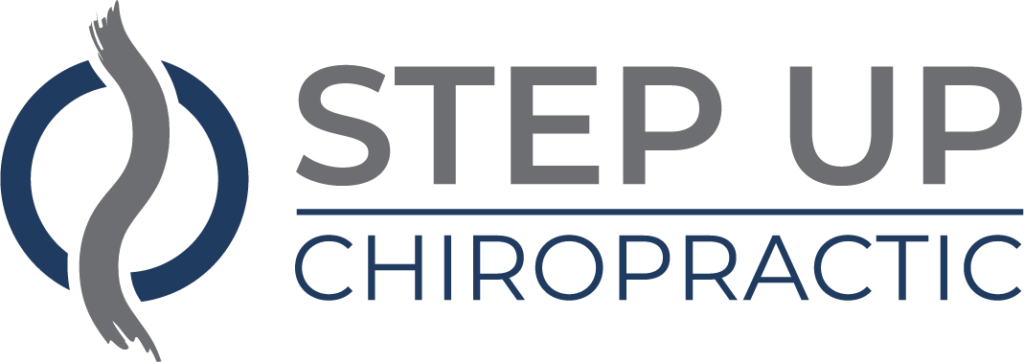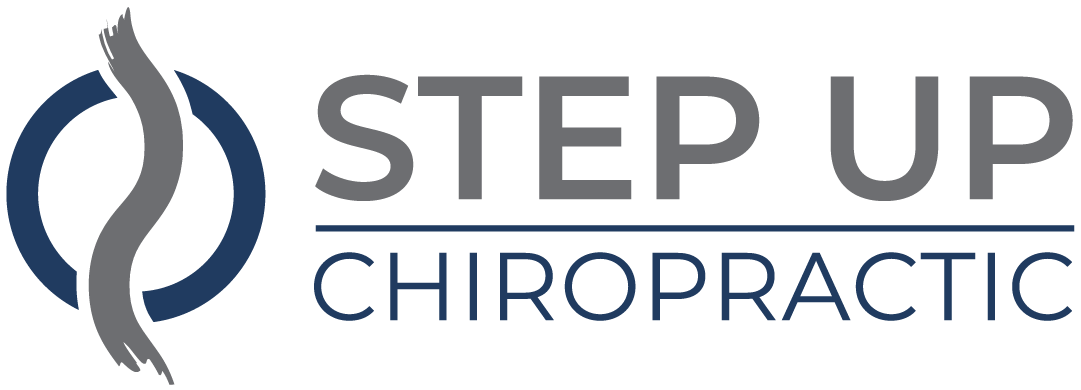If you're dealing with persistent back pain in Honolulu, you've got options that can help you find relief. From chiropractic care that focuses on spinal alignment to physical therapy aimed at building strength and flexibility, there's a variety of treatments available. You might also consider massage therapy for muscle relaxation or explore alternative methods like acupuncture. Each treatment offers unique benefits, but knowing which one suits you best can be challenging. Let's take a closer look at the top 10 treatments that could transform your experience with back pain.
Chiropractic Care
When you're dealing with back pain, chiropractic care might just be the solution you've been looking for. This hands-on approach focuses on diagnosing and treating musculoskeletal disorders, particularly those affecting your spine. Chiropractors use spinal manipulation and other techniques to help restore proper alignment and function, which can alleviate pain and improve mobility.
You may find that regular chiropractic adjustments can considerably reduce your discomfort. By realigning your spine, chiropractors help relieve pressure on nerves and restore balance to your body. This not only helps with pain relief but also promotes your body's natural healing processes. Many patients report feeling immediate relief after just one session.
In addition to spinal adjustments, chiropractors often provide advice on lifestyle changes, ergonomics, and exercises to strengthen your back. They might suggest specific stretches or activities that can prevent future issues. Moreover, chiropractic care is a drug-free approach, making it an attractive option if you prefer to avoid medication.
It's crucial to choose a qualified chiropractor who understands your specific needs. Many practitioners in Honolulu offer personalized treatment plans tailored to your condition. Before starting care, you should discuss your symptoms and any previous treatments you've had to guarantee the best approach.
Chiropractic care can be an essential part of your journey to recovery, helping you regain control over your back pain and improve your quality of life.
Physical Therapy
When it comes to managing your back pain, physical therapy offers a range of benefits that can help you regain strength and mobility.
You'll explore various techniques tailored to your needs, which can provide effective pain relief.
Finding a qualified specialist in Honolulu is the first step to getting personalized care that works for you.
Benefits of Physical Therapy
Many people experiencing back pain find significant relief through physical therapy. This approach focuses on strengthening your muscles, improving your flexibility, and enhancing your overall physical function. By working with a skilled therapist, you'll learn exercises tailored to your specific condition, which can promote healing and prevent future injuries.
Physical therapy also helps you understand your body mechanics. You'll gain insights into how posture and movement affect your back pain, allowing you to make adjustments in your daily activities. This education empowers you to take control of your recovery.
Additionally, physical therapy often incorporates manual therapy techniques, which can alleviate pain and increase mobility. You'll likely experience a reduction in discomfort as these techniques target tight muscles and improve circulation.
Another key benefit is the personalized attention you receive. Your therapist will monitor your progress closely, ensuring you're on the right path. This one-on-one support can motivate you and keep you accountable.
Ultimately, physical therapy not only helps you manage your current pain but also equips you with tools for long-term wellness. By committing to this treatment, you're investing in a healthier, more active future.
Techniques for Pain Relief
Physical therapy offers a variety of techniques for pain relief that can be tailored to your specific needs. One effective method is manual therapy, where a skilled therapist uses hands-on techniques to manipulate your muscles and joints, promoting blood flow and reducing tension.
You might also engage in therapeutic exercises designed to strengthen your core and improve flexibility, which can alleviate pressure on your spine.
Modalities like heat, ice, and electrical stimulation can provide immediate relief by reducing inflammation and enhancing circulation. Additionally, techniques such as ultrasound therapy use sound waves to penetrate deep tissue, aiding in healing and pain reduction.
Your therapist may also focus on posture education, helping you learn proper body mechanics to prevent future injuries. Breathing exercises and relaxation techniques can further enhance your overall well-being, reducing stress-related tension in your back.
Ultimately, your physical therapist will work with you to develop a personalized plan that addresses your unique pain patterns. By actively participating in your treatment, you can empower yourself to manage and reduce your back pain effectively.
Finding a Specialist
Steering through the process of finding a specialist in physical therapy can feel overwhelming, but knowing what to look for can make it easier.
Start by seeking recommendations from your primary care physician or friends who've had successful experiences. Check for credentials; verify the therapist is licensed and has specialized training in treating back pain.
Next, consider the therapist's experience. It's beneficial to choose someone who's worked with patients dealing specifically with similar issues as yours.
You might also want to ask about their treatment philosophy. Some therapists focus on manual techniques, while others emphasize exercise and education.
Don't forget to look into the clinic's environment. A welcoming, well-equipped facility can make a significant difference in your recovery journey.
Finally, assess accessibility. Confirm the location fits your schedule and that the office hours are convenient for you.
When you find a specialist who meets these criteria, you'll be better positioned to receive personalized care tailored to your needs.
Massage Therapy
Massage therapy can be a game changer for easing back pain and promoting relaxation.
You'll find various techniques tailored to your needs, helping to relieve tension and improve mobility.
When choosing a therapist, it's crucial to evaluate their experience and approach to guarantee you get the best care possible.
Benefits of Massage Therapy
Have you ever wondered how massage therapy can alleviate back pain? This hands-on approach offers numerous benefits that can help you feel more comfortable and relaxed.
First, massage therapy increases blood circulation, promoting healing in your muscles and tissues. Better circulation means that more oxygen and nutrients reach the areas in pain, speeding up recovery.
Additionally, massage therapy helps reduce muscle tension. When your muscles are tight, they can pull on your spine, leading to discomfort. By addressing these knots and tight areas, you can release tension and improve your overall mobility.
You'll also find that massage therapy encourages the release of endorphins, the body's natural painkillers. This can provide immediate relief and enhance your mood, making it easier to manage chronic pain.
Moreover, regular sessions can improve your posture. Poor posture often contributes to back pain, and massage therapy can help rectify these issues over time.
Finally, the soothing environment of massage therapy promotes relaxation, reducing stress that may exacerbate pain. If you're struggling with back pain, consider incorporating massage therapy into your treatment plan for these valuable benefits.
Techniques for Pain Relief
Relief from back pain is often found through various massage therapy techniques that target specific muscle groups and tension points.
One effective method is deep tissue massage, which focuses on relieving chronic muscle tension by applying firm pressure to the deeper layers of muscle and connective tissue. This technique can help break up adhesions and knots, promoting better circulation and flexibility.
Another approach is myofascial release, which targets the fascia—the connective tissue surrounding muscles. By applying gentle sustained pressure, this technique helps restore movement and relieve pain caused by tight fascia.
You might also benefit from trigger point therapy, where specific tight areas, known as trigger points, are identified and treated to alleviate referred pain in other areas.
Swedish massage is another popular option, featuring long, flowing strokes that improve blood flow and relax the entire body.
If you're looking for something more invigorating, consider sports massage, designed to enhance performance and recovery, particularly if you're active.
Ultimately, exploring these various techniques can help you find effective pain relief tailored to your specific needs.
Choosing a Therapist
Finding the right therapist can make a significant difference in your back pain treatment journey. When choosing a massage therapist, consider their qualifications and experience. Look for someone who specializes in treating back pain and has training in techniques like deep tissue or myofascial release.
Check online reviews and ask for recommendations from friends or healthcare providers to narrow down your options.
Once you have a few candidates, schedule consultations to discuss your specific issues and treatment goals. Pay attention to how comfortable you feel discussing your pain and how well the therapist listens. A good therapist will tailor their approach based on your needs and preferences.
Don't hesitate to ask about their approach to treatment, including what techniques they use and how they plan to address your back pain.
Also, consider logistics like location, availability, and cost to guarantee they fit your lifestyle.
Finally, trust your instincts. If something doesn't feel right or you don't see improvement after a few sessions, it might be time to seek a different therapist. Your comfort and progress are key to effectively managing your back pain.
Acupuncture
Acupuncture offers a unique approach to managing back pain, utilizing fine needles to stimulate specific points on the body. This ancient practice is rooted in Traditional Chinese Medicine and is based on the idea that energy, or "qi," flows through pathways called meridians. When you experience back pain, it can disrupt this energy flow. Acupuncture aims to restore balance and relieve discomfort.
During a session, a trained acupuncturist will assess your condition and place needles at targeted locations to promote healing. You might feel a slight prick when the needles are inserted, but most people report minimal discomfort. Many find the experience surprisingly relaxing, often leading to a sense of calm.
Research has shown that acupuncture can help reduce back pain by releasing endorphins, the body's natural painkillers. It may also improve blood circulation and lower inflammation, contributing to pain relief.
Whether you suffer from chronic issues or acute pain, this treatment can be an effective addition to your pain management routine.
In Honolulu, you'll find many licensed acupuncturists who can tailor their approach to meet your specific needs. It's important to communicate openly about your symptoms and any concerns you may have.
With regular sessions, you might discover significant improvements in your back pain, along with enhanced overall well-being. So why not give acupuncture a try? It could be the key to revealing relief from your back pain.
Pain Management Clinics
At pain management clinics in Honolulu, you'll discover a detailed approach to tackling back pain that combines multiple treatment modalities. These clinics focus on individualized care, ensuring that your specific needs and circumstances are addressed. You'll find a range of options, from medication management to physical therapy, each designed to target your pain effectively.
When you visit a pain management clinic, the first step usually involves a thorough assessment. This helps practitioners understand the root cause of your back pain. Based on this evaluation, they'll create a personalized treatment plan. This might include non-invasive procedures like nerve blocks or steroid injections, which aim to reduce inflammation and alleviate pain.
Moreover, clinics often emphasize the importance of education. You'll learn about your condition and the various techniques available for managing pain. This knowledge empowers you to make informed decisions about your treatment options.
In addition to medical interventions, many clinics offer complementary therapies, such as chiropractic care or massage therapy, which can work hand-in-hand with traditional treatments to enhance your recovery.
Regular follow-ups are common, ensuring that your progress is monitored and adjustments are made as needed. By actively participating in your treatment plan, you'll be more likely to find relief and improve your quality of life.
In essence, pain management clinics in Honolulu provide a supportive environment where you can explore diverse strategies for overcoming back pain, setting you on a path toward healing and well-being.
Yoga and Pilates
Incorporating yoga and Pilates into your routine can be a transformative way to manage back pain. Both practices focus on strengthening your core, enhancing flexibility, and promoting proper posture, all of which are essential for alleviating discomfort in your back. By engaging in regular sessions, you'll not only build strength but also develop a better understanding of your body's alignment.
Yoga offers a variety of poses designed to stretch and strengthen the muscles that support your spine. Poses like Downward Dog, Cat-Cow, and Child's Pose can release tension and improve circulation. As you breathe deeply and focus on your movements, you'll also cultivate mindfulness, which can help reduce stress and its impact on your back pain.
Pilates, on the other hand, emphasizes controlled movements and precise muscle engagement. This method targets the deep abdominal muscles, which play a fundamental role in spinal stability. Exercises like the Pilates Hundred or the Single-Leg Stretch help reinforce your core strength, making daily activities easier and less painful.
Both yoga and Pilates can be tailored to your specific needs and fitness level. You don't have to be an expert to start; many studios in Honolulu offer beginner classes.
It's important to listen to your body and consult with a healthcare professional before beginning any new exercise regimen. By committing to these practices, you'll likely find relief from back pain and improve your overall well-being.
Hot and Cold Therapy
When you're dealing with back pain, hot and cold therapy can be a game changer.
Heat application helps relax tight muscles and improve circulation, while cold therapy can reduce inflammation and numb sharp pain.
Understanding how to use these techniques effectively can make a significant difference in your recovery.
Benefits of Heat Application
While managing back pain can feel overwhelming, utilizing heat application—through hot and cold therapy—offers significant relief.
Heat therapy works wonders by increasing blood flow to the affected area, which helps relax tense muscles and alleviates stiffness. You'll find that a warm compress or heating pad can be incredibly soothing, especially when you're experiencing muscle spasms or discomfort.
Applying heat can also promote the release of endorphins, your body's natural painkillers, giving you a more profound sense of relief. Whether you opt for a warm towel, heating pad, or a hot water bottle, the warmth penetrates deep into your muscles, easing tension and promoting relaxation.
Moreover, heat application can enhance your overall flexibility, making it easier to move without pain. If you're dealing with chronic pain, incorporating heat therapy into your routine helps you manage discomfort effectively.
It's essential, though, to monitor the temperature to avoid burns and limit your heat exposure to 15-20 minutes at a time. With consistent use, you'll likely notice a significant improvement in your back pain, allowing you to enjoy daily activities with greater ease and comfort.
Cold Therapy Techniques
Heat therapy can be highly effective, but cold therapy techniques also play a significant role in managing back pain. When you experience inflammation or acute pain, applying cold can help reduce swelling and numb the area, providing immediate relief.
You can use ice packs, frozen gel packs, or even a bag of frozen vegetables wrapped in a towel for this purpose. Aim for 15-20 minutes of cold application, making sure to take breaks to avoid skin damage.
If you're out and about, consider a cold compress or cold spray, which can be convenient and effective. You can also try a cold bath or shower if you're looking for broader relief.
Remember to elevate the painful area if possible, as this can further reduce swelling. For chronic back pain, alternating between heat and cold can be beneficial. Start with cold therapy to manage inflammation, then switch to heat to relax muscles and improve blood flow.
Always listen to your body; if cold therapy causes discomfort, stop immediately. By incorporating these cold therapy techniques into your routine, you'll better manage your back pain and enhance your overall recovery process.
Prescription Medications
If you're struggling with back pain, prescription medications can offer significant relief. These medications are typically categorized into several types, each targeting different aspects of pain management. Nonsteroidal anti-inflammatory drugs (NSAIDs), like ibuprofen or naproxen, are often the first line of defense. They reduce inflammation and alleviate pain, helping you regain mobility.
If NSAIDs aren't effective, your doctor might prescribe stronger options, such as muscle relaxants. These medications can help ease muscle spasms, which often accompany back pain. While they can be effective, it's important to use them only under medical supervision due to potential side effects and dependency issues.
In some cases, your doctor may recommend opioids for more severe pain. While these can provide quick relief, they come with a higher risk of addiction and should be used with caution. It's vital to discuss the potential benefits and risks with your healthcare provider before starting any opioid regimen.
Additionally, certain medications like anticonvulsants and antidepressants have been found to help with nerve-related pain. These can be particularly beneficial if your back pain is chronic or caused by nerve issues.
Herbal Remedies
Many people seek alternatives to prescription medications for back pain relief, and herbal remedies can be an effective option. These natural solutions often come with fewer side effects and can promote healing without the risks associated with pharmaceuticals. If you're considering herbal remedies, it's crucial to know which ones might help alleviate your discomfort.
Turmeric is a popular choice, known for its anti-inflammatory properties due to curcumin. You can incorporate it into your diet or take it as a supplement to help reduce inflammation and pain.
Similarly, ginger can serve as another potent anti-inflammatory agent, whether you consume it fresh, in tea, or as a supplement.
Another herb worth exploring is devil's claw, which has been used for centuries to treat pain. It may help with back pain by reducing inflammation and improving mobility.
You might also consider using capsicum cream, derived from chili peppers, which may provide temporary relief when applied topically.
Boswellia, or Indian frankincense, is another remarkable herb that may help reduce inflammation and pain. You can find it in supplement form, and many swear by its effectiveness.
Finally, valerian root is known for its calming effects, which can help you better manage stress and tension that might be contributing to your back pain.
Before starting any herbal remedy, it's wise to consult with a healthcare professional. They can help guarantee that the herbs you choose are safe and appropriate for your specific situation.
Surgical Options
When conservative treatments for back pain fail to provide relief, surgical options may become a viable choice. It's vital to explore these options with a qualified healthcare professional who can guide you through the decision-making process.
Here are some common surgical procedures you might consider:
- Discectomy: Removal of the herniated portion of a disc to relieve nerve pressure.
- Laminectomy: Removal of part of the vertebra to create more space for the spinal cord and nerves.
- Spinal Fusion: Joining two or more vertebrae to stabilize the spine and reduce pain.
- Artificial Disc Replacement: Replacing a damaged disc with an artificial one to maintain spinal mobility.
- Foraminotomy: Widening the foramen (the opening where nerves exit the spine) to relieve nerve compression.
Surgery often comes with risks and a recovery period, so it's important to weigh these against the potential benefits. You should also consider your specific condition, whether it's related to a herniated disc, spinal stenosis, or chronic pain.
Before opting for surgery, confirm you've explored all non-invasive treatments like physical therapy, medications, and lifestyle changes. Each person's back pain is unique, and what works for one person mightn't work for another.
Consult with a specialist who can tailor a treatment plan to your needs and help you navigate the surgical landscape effectively. With the right approach, surgical options could bring you the relief you've been seeking.
Conclusion
When it comes to managing your back pain in Honolulu, you've got plenty of effective options. Whether you choose chiropractic care for spinal alignment, physical therapy to boost your strength, or even acupuncture for holistic healing, finding the right treatment is key. Don't forget about complementary therapies like hot and cold treatments or herbal remedies. Remember, a personalized approach will help you achieve the best results for your recovery and long-term wellness. Take charge of your health today!




